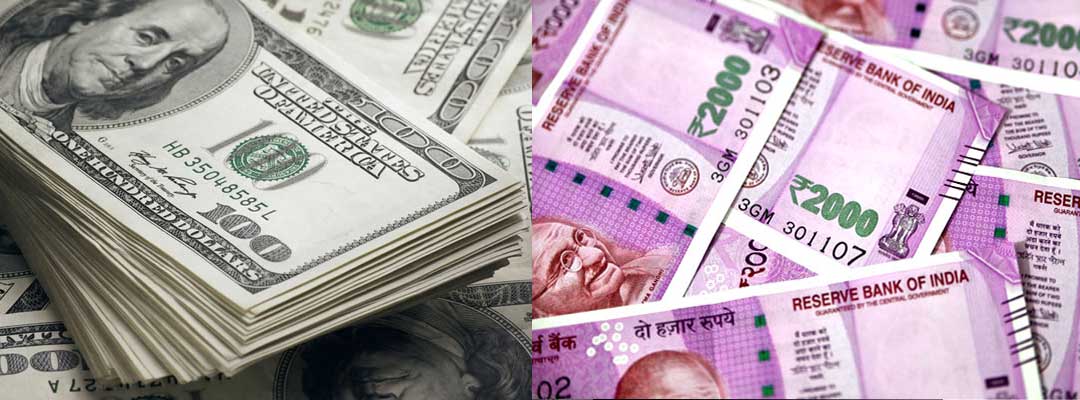
With BookMyForex currency calculator, you can convert Dollar to Indian Rupee at best exchange rates. dollar at a rate of 7.5 rupees = 1 dollar until 1971. When India launched its first 5 Year Plan, the Indian Rupee resultingly used to peg with the U.S. However, the sources state that British pound would have worth about 4 USD at that point of time – hence, concluding that the US Dollar would’ve been more than 3Rs then. Right after Independence however, the Indian rupee continued to peg to the British pound at a rate of 1 rupee = 1 shilling and 6 pence what can be withdrawn from the stated that as 13 1/3 rupees per British pound. As reported: from 1927 to 1966, 1 pound valued to 13 INR. Also, the Indian Rupee was pegged to Pounds then since India was under British Raj, keeping the value stable at that moment. If you believe that exchanging 1 USD to INR in 1947 would have got you 1 Rupee exactly, then, sadly, that’s not true reason being when India got her independence in the year 1947, there were no outstanding credits on theīalance sheet of India that kept Indian Rupee at parity with the US Dollar. Trending German woman plants onions with Indian mother-in-law, says it's fun.To answer the legendary question–How the Indian rupee has devalued since 1947 till date?We’ve come up with a simple clarification.Entertainment Breathe Into The Shadows Season 2 review: Abhishek Bachchan, Amit Sadh show is a predictable plod.Entertainment The Crown season 5 first impression: The stage is set for an 'all-out war'.Explained Why the US midterm results are a personal setback for Trump.Himachal polls| In Lahaul & Spiti, ‘missing’ water, lack of jobs remain hot topics.“A weakening rupee hurts foreign investors, who came looking for a good return, as well as Indians, who have loans abroad,” he said. Sudipto Mundle, Chairman, Centre for Development Studies, pointed to another complication. “Costlier imports (because of a weaker rupee) add to the cost-push inflation and bump up domestic inflationary process,” Sen said. But at present, India is already facing high inflation and continued depreciation may be making matters worse.

Sen said that under normal circumstances, rupee depreciation is good for the current account deficit because it leads to higher exports. “If the other currency has lost more than the rupee, the net effect could be negative.” India’s balance of payments In exports that happen via the dollar, “since rupee is not the only currency weakening against the dollar, the net effect will depend on how much has the other currency lost to the dollar”, Sen said. For one, in bilateral trade, the rupee has become stronger than many currencies.

On the exports front, however, Sen noted that it is less straightforward. Foreign portfolio investors (FPI) pulled out $16.8 billion.Īt the end of the year, the BoP was at a surplus of $47.5 billion - that is, the net effect of all transactions on current and capital accounts was that $47.5 billion came into India. On the capital account, however, there was a surplus of $86.3 billion, thanks largely to foreign direct investments (FDI) providing more dollars in the shape of loans etc. As a result, the current account, which was in surplus in the previous year, went into a deficit of $38.8 billion. But the Invisibles account showed a surplus of $150.7 billion. That is, the country imported more goods (such as crude oil) than it exported, and the net effect was negative. In 2021-22, India had a trade deficit of $189.5 billion. India’s vulnerability on the external debt front The important thing about the BoP is that it always “balances”.


If an American invests in Indian stock markets, dollars will come into the BoP table and it will be accounted for under FPI within the capital account. So if an Indian buys an American car, dollars will flow out of BoP, and it will be accounted for in the trade account within the current account. The current account is further divided into the trade account (for export and import of goods) and the invisibles account (for export and import of services). The BoP has two broad subheads (also called “accounts”) - current and capital - to slot different types of transactions. If a transaction leads to dollars coming into India, it is shown with a positive sign if a transaction means dollars leaving India, it is shown with a minus sign. The BoP is essentially a ledger of all monetary transactions between Indians and foreigners. To understand movements on these variables, one must understand India’s Balance of Payment (BoP) statement.


 0 kommentar(er)
0 kommentar(er)
